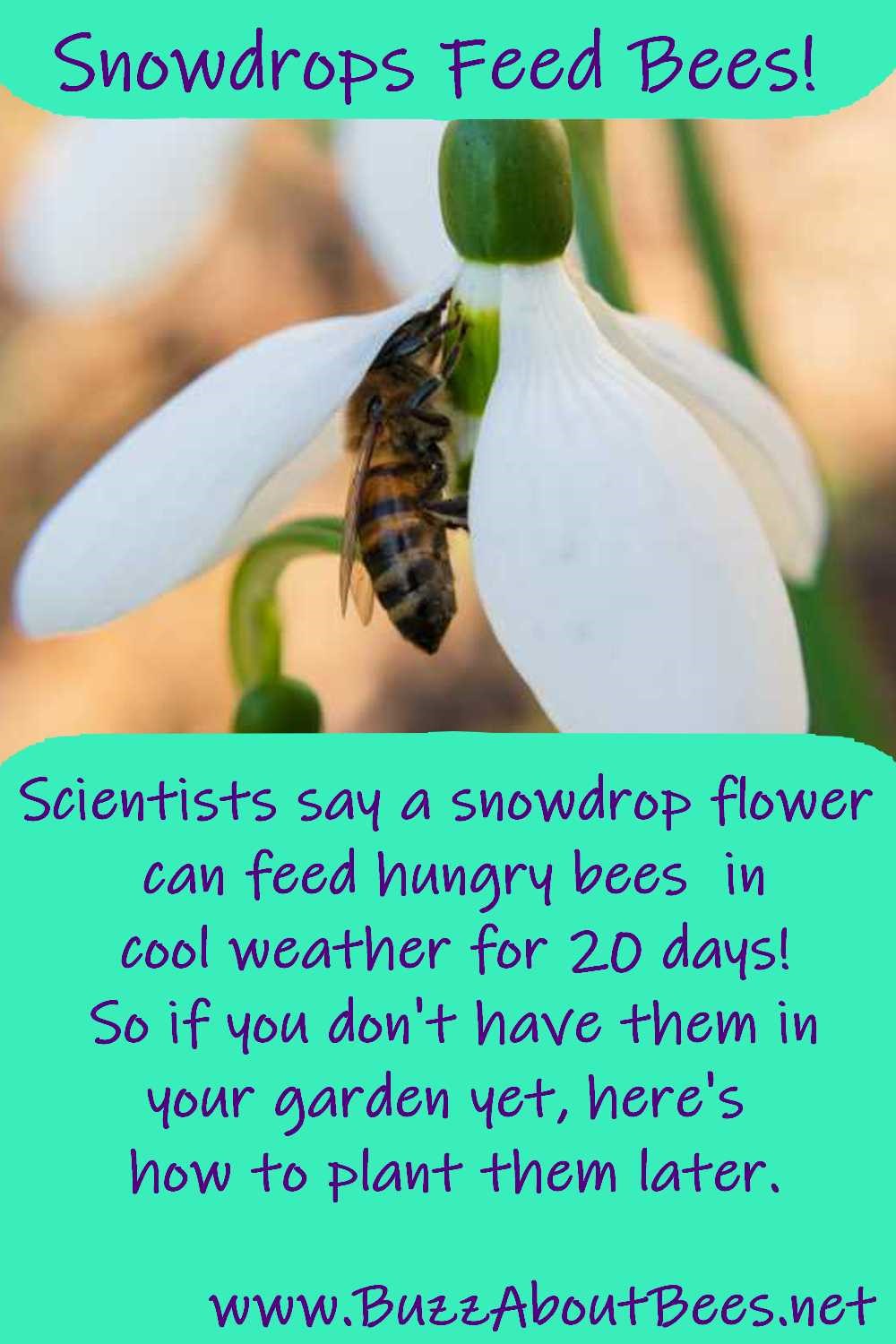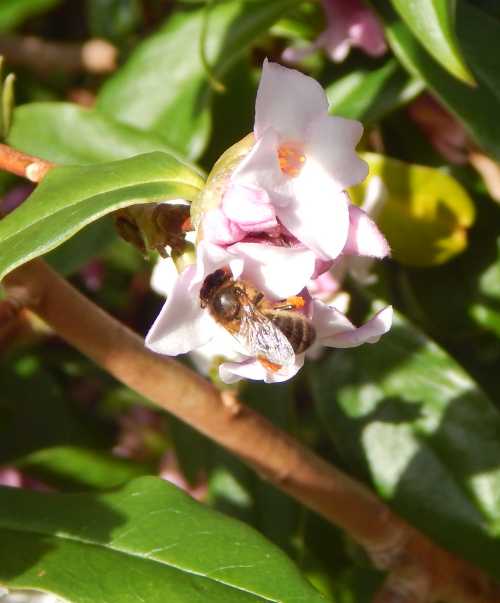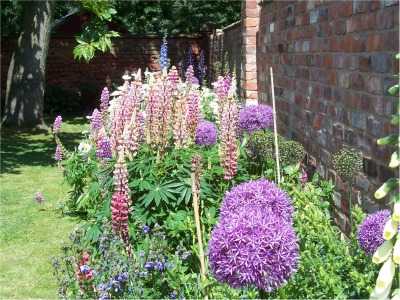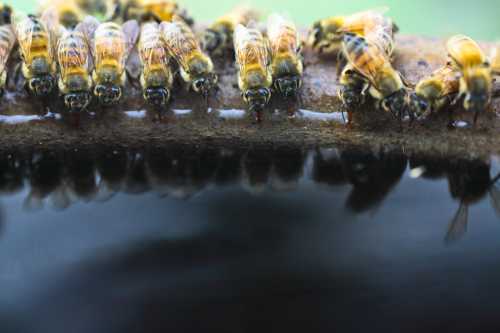Do Bees Like Snowdrops?
Yes, bees love snowdrops! Snowdrops (Galanthus) are a beautiful, early spring flowering bulb which attracts bees from winter to early spring (depending on the region where they are growing).
Read all about why bees like snowdrops, how to plant snowdrops, and watch my video featuring bees on snowdrops.
Why Bees Like Snowdrops (Galanthus) And How To Plant Them
Winter can be a challenge for bees. Honey bee colonies will huddle together in a winter cluster back at the hive or nest, where they'll rely on their food stores (honey) to see them through.
Bumble bee queens will have found a (hopefully snug) place to overwinter, and will survive on the fat and energy reserves they store within their own bodies.
A few other bee species may be overwintering in the nest cells in which their parent first laid an egg, or in a suitable crevice or hole.
But at some point, bees will need to emerge from their winter slumber, and those species which emerge early will need to replenish their food reserves quickly in order to survive.
Snowdrops can be a great help at this time, and bees have been observed to gather nectar and pollen from snowdrops at an air temperature of 7 - 8 °C (44.6 - 46.4°F)1.
How Snowdrops Helps Bees - 4 Ways
1. Snowdrops are long-flowering
According to a study in Poland (Weryszko-Chmielewska & Chwil1, 2016), the average flower lifespan of a snowdrop species, Galanthus nivalis, was 31 days!
2. Snowdrops provide pollen for bees
Pollen is vital for the health of bees, and is a vital source of protein.
Pollen is also believed to assist in the development of the ovaries in bumble bee queens.
The scientists in Poland measured the pollen offering of snowdrop flowers (Galanthus nivalis). The average mass of pollen produced by one flower was 4 mg!
3. Nectar over a long flowering period
Nectar is vital for energy, as well as other micronutrients which are beneficial to bees.
The Polish study found that nectar secretion from snowdrop flowers occurred for quite a long time - about 2/3 of the flowering period (20 days)! On average, snowdrops provided bees with 2.66 mg of nectar per flower, once the flower bud was open. The concentration of sugars in the nectar was greater when the flower bud first burst open.
4. Early flowering
Like Crocus (another valuable flower for bees), Snowdrops (Galanthus) are a gift for bees.
These lovely, scented, delicate bulbs are among the first to shoot up fresh green stems and flowers laden with pollen and nectar. It's no surprise that in the wild where established, beautiful carpets of snowdrops can help hungry bees!
Weryszko-Chmielewska & Chwil commented:
"Pollen and nectar production by plants that bloom earliest in the growing season is of great importance to bees and other insects seeking food already during early spring in order to replenish stores used during the winter.
The flowers of G. nivalis with their large stamens produce significant amounts of pollen (4 mg), comparable to the mass of pollen in some species of the genus Rosa that produce an androecium of numerous stamens, e.g., R. canina.
The nectar contained in these flowers (2.66 mg), even though its amount is not evidence of abundant nectar production by this species, can be a very valuable source of early spring nectar for insects if these flowers occur in great numbers per unit of area."
How to grow snowdrops for bees
Snowdrops look great in natural swathes on lawn areas beneath trees and shrubs. They can brighten up a partially shaded spot.
However, if you have a very small garden, remember you can plant them in pots - make sure you have plenty of pots and bulbs.
Snowdrops can grow in most soils, but not permanently wet soil.
It's best to purchase snowdrops 'in the green' from a reputable nursery, and plant them straight away to avoid them drying out.
Alternatively, if you have friends who are willing to share a few snowdrops with you from their own garden, plant freshly-lifted snowdrops late in the spring, when flowering has ended and foliage is dying back.
References
1. Weryszko-Chmielewska, Elzbieta & Chwil, Mirosława. (2016). Flowering biology and structure of floral nectaries in Galanthus nivalis L.. Acta Societatis Botanicorum Poloniae. 85. 10.5586/asbp.3486.
If you found this page helpful or interesting, I'd really be grateful if you would share it with others - if not this page, perhaps another, such as Gardening For Bees.
Thank you so much :) .



